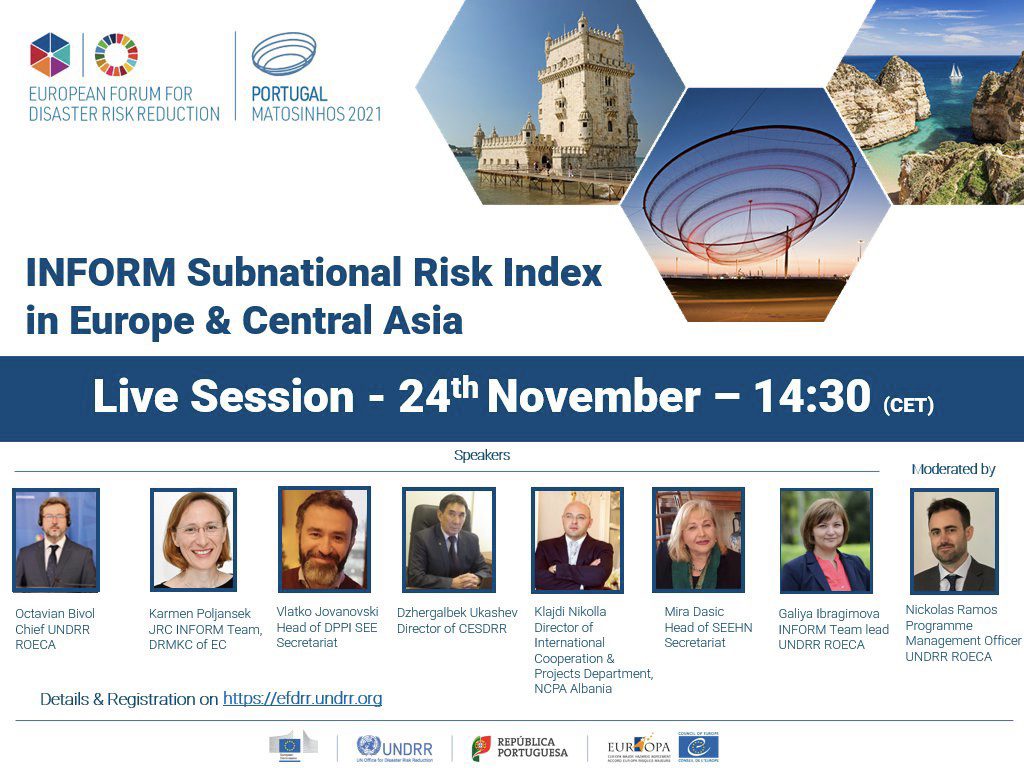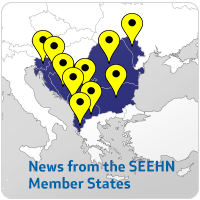Dear participants and colleagues,
It is my pleasure to address you, on behalf of the SEEHN Secretariat, at the European Forum for Disaster Risk Reduction. I wish to congratulate the organizers for providing us with this platform for discussions.
When approached by the Disaster Preparedness and Prevention Initiative for South-Eastern Europe to contribute and implement the project on the global INFORM risk index in Member States of bilateral mandate, SEEHN Secretariat took great interest. The countries that participated in the pilot assessment are Albania, Montenegro and North Macedonia.
SEEHN Secretariat, in particular, supported the data collection of health related indicators as part of the subnational INFORM risk index for the above mentioned countries. The process started in January 2021 and we had ensured commitment from the respective ministries of health.
Using the subnational INFORM model for South East Europe, data has been gathered at the first administrative level (corresponding to the subnational regions, capitals and municipalities) of Albania, Montenegro and North Macedonia, in total for 44 administrative units.
The INFORM model is based on three dimensions of risk: Hazards & Exposure, Vulnerability and Lack of Coping Capacity – to provide an overview of the underlying factors leading to humanitarian risk. Thus, the results are of particular importance to health actors reflecting on the preparedness of the national systems.
From the other side, the COVID-19 pandemic reminded us of how important is the preparedness and resilience. These two areas are largely discussed during the last two years especially on how we can improve them and be prepared to an eventual new threat.
At this very point, I believe that the sub-national and the regional cross-countries collaboration, and coordination between international actors shall trail a comprehensive and timely preparedness and response action to emergencies.
In this respect, the first step would be to share the results and raise awareness on the current situation, with the government stakeholders. This can be done in various ways, during the bilateral meetings, in the framework of the SEEHN Plenary meetings and by using the next year platform of the ministerial Forum.
We shall back our communication efforts with solutions by providing capacity building to the countries, or even dive and select the riskier regions – enhance capacities and ensure transfer of knowledge and practices from the better off to the less safe regions.
At the same time, our efforts could be channelled to streamline fundraising to this priority and support all the activities proposed earlier.
The INFORM index supports a proactive disaster risk management framework. It will be helpful for an objective allocation of resources for disaster risk reduction and management as well as for coordinated actions focused on anticipating, mitigating, and preparing for humanitarian emergencies. It also identifies areas for improvement in national disaster data availability and compliance with implementation of Sendai Framework for Disaster Risk Reduction, SDGs and other global initiatives.
In conclusion, I wish to remind ourselves how the COVID-19 pandemic just brought preparedness to disasters back into the top priority line. We shall use the created momentum to build upon it. Despite all the challenges that we have, we keep our work centred to better serve SEEHN Member States.
Finally, I wish to emphasize the importance of the topic and to highlight the particular fruitful cooperation of the SEEHN with all parties involved: the Secretariat of Disaster Preparedness and Prevention Initiative for South-Eastern Europe and the United Nations Office for Disaster Risk Reduction and the Governments of the SEEHN Member States involved.
I express my thanks on this occasion and encourage this practice to continue in the future to strengthen the regional cooperation within South Eastern Europe.






